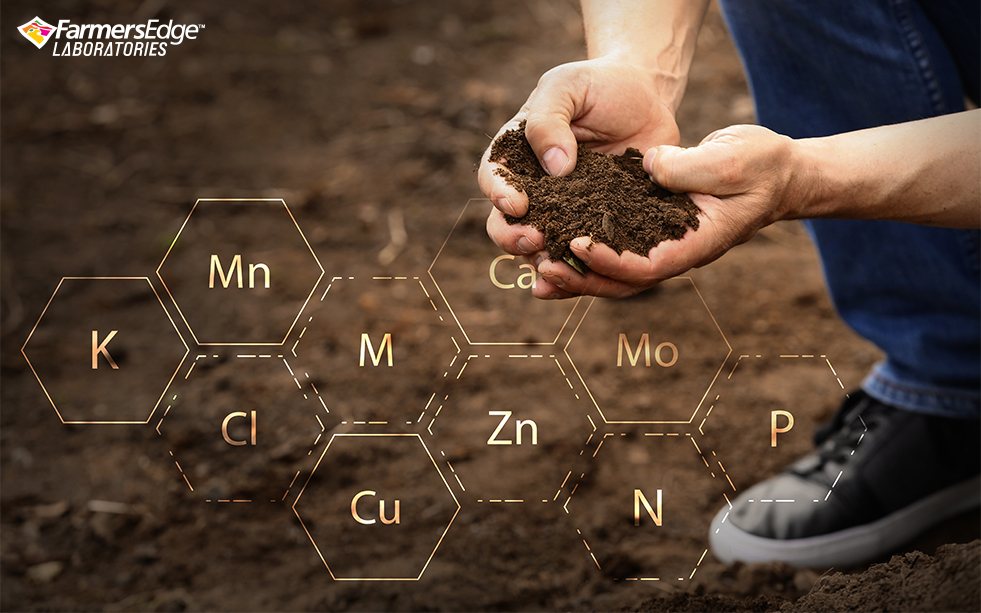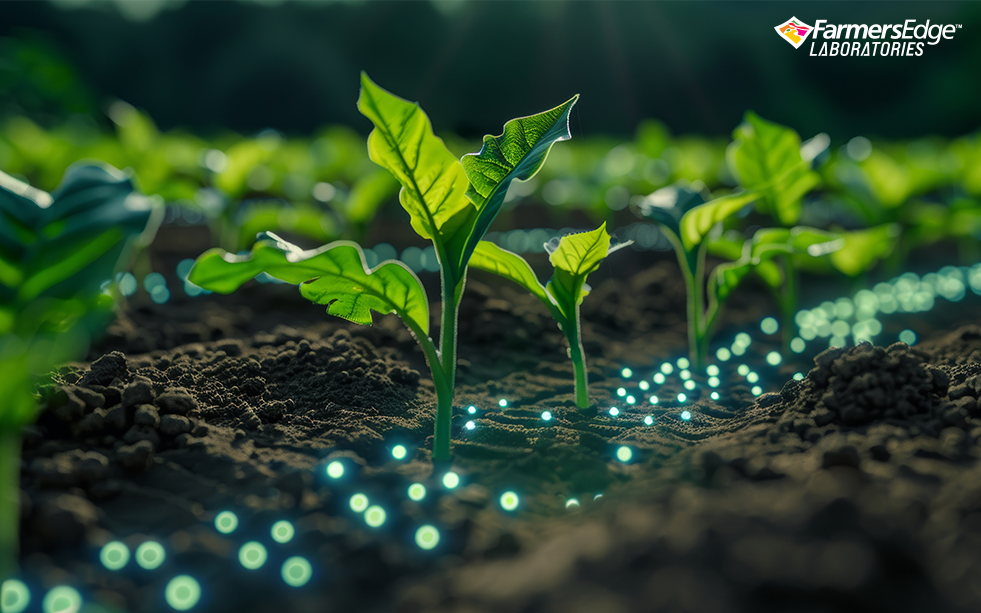As agriculture evolves toward more data-driven and scalable systems, agronomists and retailers are looking for ways to increase accuracy, reduce costs, and expand service across more acres. One of the most promising innovations making that possible is Virtual Soil Testing (VST). Powered by AI and machine learning, VST extends the value of traditional soil testing by turning a single test into years of nutrient insights.
At Farmers Edge, our VST platform leverages over 170 variables to generate predictive nutrient maps, giving agronomists lab-grade recommendations—without being limited by time, weather, or logistics.
Here are five things to know about Virtual Soil Testing and why it’s poised to transform agronomy services.
1. It’s Not a Replacement—It’s an Amplifier
Many agronomists worry that AI-based tools are meant to replace traditional methods, but Virtual Soil Testing doesn’t eliminate physical sampling. It enhances it. VST begins with one physical sample and builds a predictive model that generates up to four years of soil nutrient insights across each management zone.
🔹 Why it matters:
Traditional soil tests provide a static snapshot. VST turns that snapshot into a dynamic model, offering season-over-season guidance without requiring repeated lab submissions.
🔹 Fact to know:
According to the USDA, most fields are tested for nutrients every 3–4 years. With VST, agronomists can fill in the gaps with data-driven predictions instead of operating blind between tests.
2. It Uses Over 170 Agronomic Inputs to Model Nutrients Accurately
Unlike simpler prediction models based only on past test data, Farmers Edge VST is fueled by a deep and dynamic dataset:
- Historic soil test results
- Crop rotation patterns
- Yield maps
- Fertility program history
- Localized weather and growing degree days
- Management zone boundaries
- Topography, texture, and more
This high-dimensional input set allows the model to generate nutrient estimates tailored to each field and zone, reflecting real-world variability across acres.
🔹 Why it matters:
Predictive accuracy depends on context. A generic model may work on average but fail in specific zones. VST’s field-level granularity helps ensure the recommendations actually work where they’re applied.
🔹 Fact to know:
According to McKinsey’s 2023 report on AI in agriculture, “agronomic models that integrate over 100 data inputs can outperform conventional sampling by as much as 20% in zones with limited access to testing labs.”
3. It Reduces Sampling Costs—Without Compromising Recommendations
Physical sampling is expensive—both in terms of time and money. Between labor, travel, lab fees, and logistics, full-scale soil sampling can range from $15–$30/acre. That cost adds up quickly for large-scale operations or service providers managing many growers.
By enabling a strategic, reduced sampling plan, VST can help agronomy teams cut total sampling costs by up to 40%, while maintaining confidence in the resulting recommendations.
🔹 Why it matters:
Reducing costs without reducing insight is a win for both providers and their customers. It enables agronomists to redirect time and resources to value-added services like fertility planning and grower consultation.
🔹 Fact to know:
A 2024 PrecisionAg Alliance survey found that 73% of agronomists cited “cost of sampling” as a key barrier to scaling precision fertility programs. VST directly addresses this barrier.
4. It Solves for Timing, Scale, and Environmental Constraints
One of the biggest challenges with physical sampling is logistics. Delays in shipping samples, sudden rainfall, and tight in-season windows can derail sampling plans—and delay input decisions.
With VST, nutrient predictions are generated digitally and instantly. Whether you’re managing 1,000 acres or 100,000, agronomy teams can deliver field-by-field recommendations without being held back by weather or sampling availability.
🔹 Why it matters:
As agronomic services scale, consistency becomes critical. You need the ability to serve more acres, more growers, and more zones—without compromising timing or accuracy.
🔹 Fact to know:
According to CropLife magazine, 65% of ag retailers are expanding service territory in 2025. Technology like VST enables that growth without increasing staff or fleet size.
5. It’s Field-Tested, Proven, and Commercially Scalable
Farmers Edge has deployed and refined the VST model across millions of acres in North America over the last decade. It’s been field-tested in various climates, crop types, and management systems—and is now commercially available for agronomy teams and retailers looking to scale smarter.
🔹 Why it matters:
New technology needs trust to scale. VST isn’t experimental—it’s production-ready. With commercial tools, APIs, and lab integrations, it can fit directly into your existing service stack.
🔹 Fact to know:
Over 50 million acres of agronomic data feed Farmers Edge’s models, including 169 validated agronomic models and decades of fertility and yield records.
Conclusion: Why Virtual Soil Testing is Gaining Traction
The ag industry is shifting toward scalable, cost-effective, and adaptive systems—and Virtual Soil Testing aligns with that future. It doesn’t eliminate agronomy. It empowers it.
By combining the precision of lab sampling with the power of AI, VST enables faster decisions, better service, and stronger ROI for growers and ag retailers alike.
Whether you’re facing resource constraints, scaling challenges, or looking to differentiate your services—VST provides the digital backbone to modernize your soil testing approach.
Want to Learn More?
Let’s talk about how VST fits into your agronomy services. Contact us or visit https://www.farmersedgelabs.com/vst/



